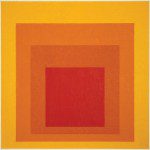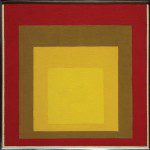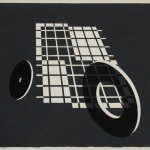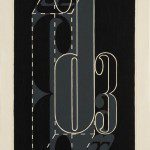Hirshhorn’s Homage to Josef Albers
By • November 3, 2011 0 1700
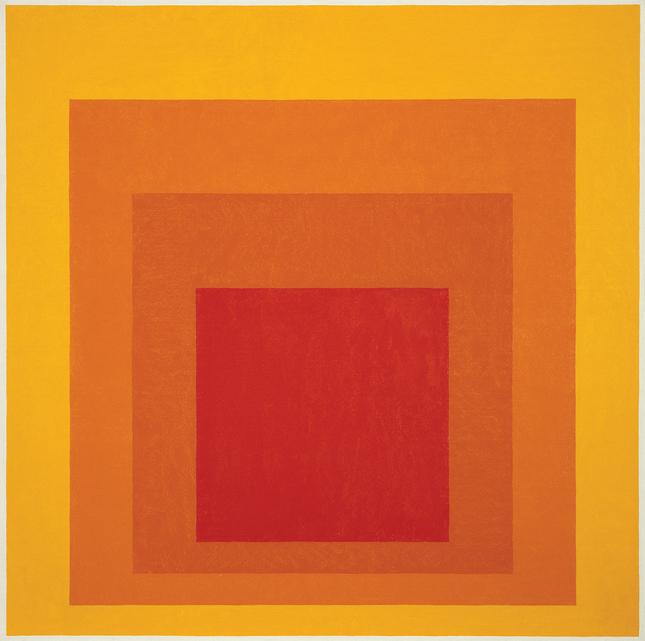
At the Hirshhorn Museum, “Innovation and Inspiration” is a perfect title for the exhibition focusing on the work and teaching of Josef Albers. Albers is known for his work on color theory, and I for one have never felt color fits into any theory, as it is so subjective in effect. Nevertheless, Albers had and continues to have an enormous effect on the way color is perceived in everyday use. If you look at his color exercises you see the colors we see around us in everyday life, whether in the home, or office, or other public spaces. Albers is far more influential than Martha Stewart!
Albers’ dynamic early graphic work had nothing to do with squares within squares, and in the pieces on view he experimented with type usage. He also used work that implied dimension through linear perspective, something Albers would not wholly abandon. In addition a few landscape lithographs that are unremarkable represent his earliest work. There is also a self-portrait by Albers that is pure Kokoshka. It is surprising to see even a glimpse of expressionism in the exhibition!
Assemblages by Albers incorporating glass and metal/wire/paint/nails/mesh/imitation pearls from the ’20s look contemporary. “Window Picture” has beautiful, rich, expressive color. “Grid Mounted Squares” is glass/iron/wire and again uses deep color, quite unlike later Albers. Modestly sized, these works are like modern stained glass windows.
What follows of Albers work is mostly his endless “Homage to the Square.” I have been looking, and sometimes not been looking, at Albers for almost 50 years, and there is sometimes a surprise. Yet I often feel about the squares the way I feel about hearing someone playing scales on the piano. It’s useful, but rarely exciting.
There is no doubting Albers’ importance in his role as teacher. Albers was a Bauhaus member from 1920-1933. Fleeing Hitler and coming to the U.S. to the incredibly important art campus at Black Mountain College (North Carolina), Albers was a founding director. Some of the greatest figures in mid-century art in America found their way to Black Mountain, either teaching or in its student programs. By art, I mean those working in all disciplines: John Cage, Stefan Wolpe, Willem de Kooning, Merce Cunningham, Buckminster Fuller, Robert Duncan, Charles Olson and many more. One of the most important schools of poetry is the U.S. is known as Black Mountain poetry. In 1950 Albers became chair of the Department of Design at Yale University.
Albers’ students, including Rauschenberg, Noland, Nevelson, Bolotowsky and Judd fill the last two galleries with paintings, constructions, and sculptures. I have never seen Kenneth Noland and Robert Rauschenberg hanging next to each other so amicably! Not to be missed are some wonderful works by Anni Albers, wife of Josef. (Through April 11.)
- Albers, “Homage to the Square: Glow” (1966) | Hirshhorn Museum
- Garrett Faulkner
- Garrett Faulkner
- Garrett Faulkner

